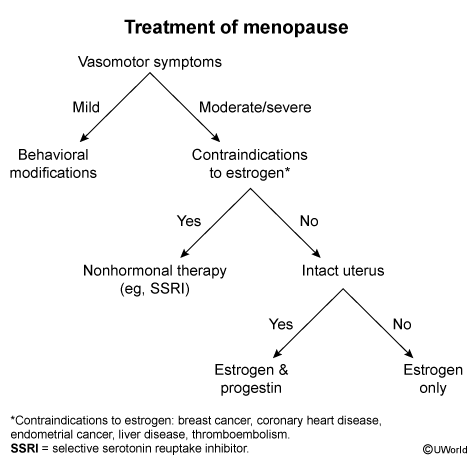Menopause
Article Sections
Introduction
Menopause is a natural process of aging that marks the end of menses and reproductive function. The menopausal transition is a significant physiologic transition accompanied by various symptoms and health implications.
Menopause is defined as the cessation of menses for ≥12 months in women with previously regular menstrual cycles. The average age for menopause is 51, but the menopausal transition (perimenopause) begins approximately 4 years prior.
Pathophysiology
Menopause is defined by the permanent cessation of menses for 12 months. This cessation occurs due to ovarian follicle depletion and loss of ovarian function (cyclic estrogen and progesterone production).
The ovary contains a set number of follicles. During fetal life, primordial germ cells (oogonia) rapidly proliferate via mitosis, and, by 16-20 weeks gestation, there are an estimated 6-7 million oogonia. Oogonia enter meiosis I to form primary oocytes, at which point they are suspended in prophase I. Following the initiation of meiosis, the number of oocytes steadily declines (atresia); between 1 and 2 million exist at birth and only about 300,000 exist by puberty. By age 40, the follicular pool has dropped to about 25,000, and at menopause, only about 1,000 remain.
Continue Learning with UWorld
Get the full Menopause article plus rich visuals, real-world cases, and in-depth insights from medical experts, all available through the UWorld Medical Library.
Figures


